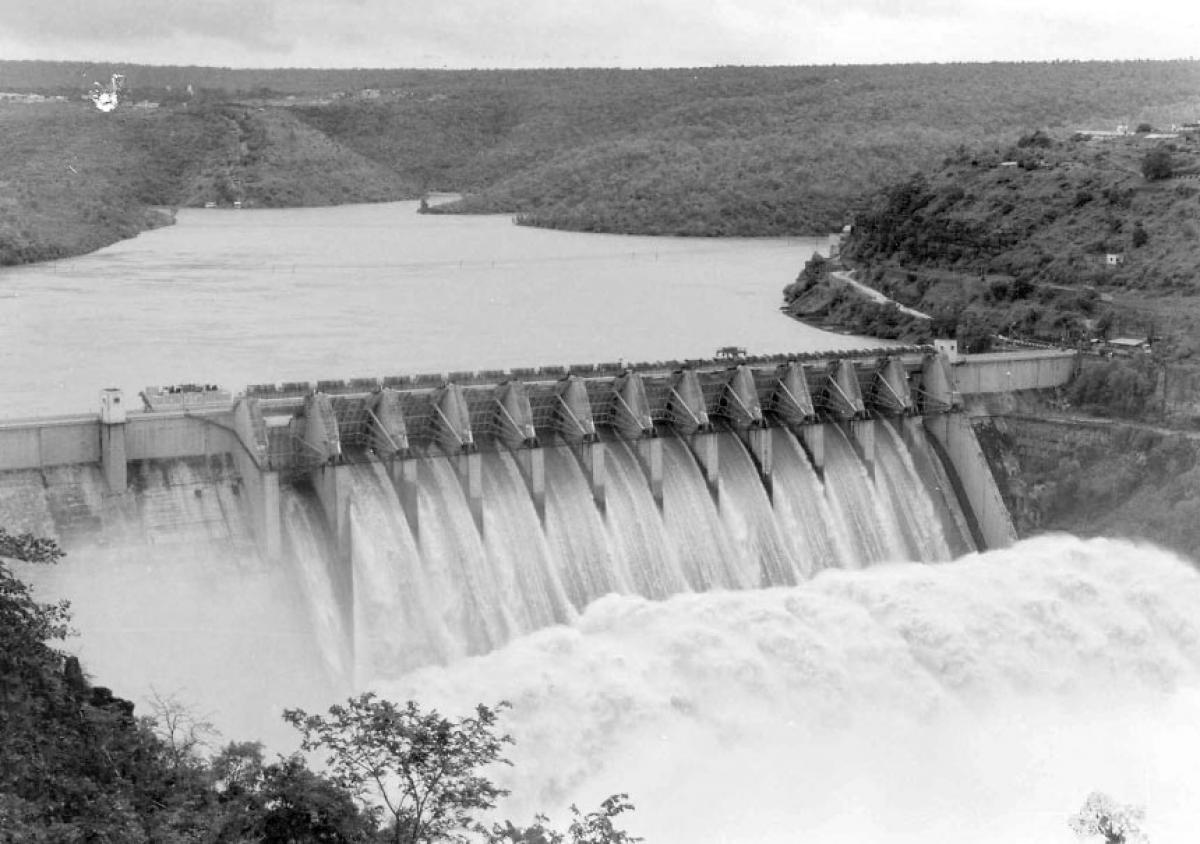Live
- Skill enhancement session organised for school teachers
- Tribal Ashram school girl students fall sick again
- Grand finale of Innovation marathon begins at IIT Tirupati
- Ensure no inconvenience to bus passengers: MLA
- Being overweight surpasses smoking as Australia's leading health risk
- Rush of Devotees at Tirumala normal, to take six hours for darshans
- Thiruvannamalai turns a major revenue earner for RTC
- Development works in Warangal to take off on war-footing: Ponguleti
- Great day for America: Trump welcomes FBI chief's resignation announcement
- SAAP chief for bringing hi-tech into sports
Just In

Senior officials working in Irrigation departments of Andhra Pradesh and Telangana feel lack of concerted efforts between both the States to adopt a mutually beneficial understanding on water utilisation of the Godavari and the Krishna would hurt both the States in the long run.
Though both the Telugu speaking States extend olive branch to Maharashtra and Karnataka, they quarrel with each other
Hyderabad: Senior officials working in Irrigation departments of Andhra Pradesh and Telangana feel lack of concerted efforts between both the States to adopt a mutually beneficial understanding on water utilisation of the Godavari and the Krishna would hurt both the States in the long run.
According to these officials, both the States have been positioned in such a geographical condition, which necessitates the Telugu States for interdependence on each another, and it is better to devise sustainable water utilisation mechanism keeping in view the long-term agricultural, industrial and drinking water needs.
Speaking to The Hans India, a senior official from Telangana said, “Irrespective of allegations and counter allegations, there are several projects which were proposed in United Andhra Pradesh in the territories of both the States. Several of them do not have water allocation. But, they were proposed on utilising flood waters, or to act as diversion schemes, to take water from within the allocated waters of the Krishna and the Godavari.”
But, in case of the Krishna, Karnataka had already completed numerous projects across the river and its tributaries. However, Andhra Pradesh is trying hard to negotiate Karnataka as it is an upper riparian State and to come to reasonable terms for release of waters to Tungabhadra. Because the State government wanted allocated water to Tungabhadra in particular would not take a beating due to over utilisation in the upper reaches in Karnataka.
It has adopted optimum utilisation of the Krishna –Tungabhadra waters to meet the water demands of Rayalaseema. It was against this backdrop it had proposed modernisation of Tungabhadra canal. Because, it wanted to utilise the Godavari waters to meet the water demands of Krishna delta, said the official.
Similarly, in case of the Godavari, the entire river course could be classified into three important legs or stretches, keeping in view the water availability. The first leg of stretch falls from the starting point of the Godavari in Maharashtra - to the entry point of Telangana territory. The second leg falls from TS territory - to the river’s entry point into Andhra Pradesh. And the third leg is from the river’s entry point into Andhra Pradesh - to its confluence with the sea.
Of these three legs, Maharashtra has built several barrages on the Godavari and its tributaries, including the Babli Irrigation Project. This gives edge to that State to overexploit the water. Telangana territory falls under the second leg. Most of the projects which were proposed in this area were lift irrigation projects, because the river flows much lower to the ground level. Even this stretch has been facing water shortage due to lack of sufficient inflows from the upper reaches.
It is only in the third leg, which falls under AP territory, there are some inflows from Sabari River and its tributaries coming from the catchment areas located in the forest areas bordering AP and Chhattisgarh. It is against this backdrop that Telangana has been wooing Maharashtra to tap whatever water it could get by speeding up the pending irrigation projects of interstate nature.
“Both the States have been trying to extend olive branch to their neighbors as both Maharashtra and Karnataka are upper riparian States for the Krishna and the Godavari rivers. But, when it comes to an issue between them, they are not showing the same kind of positive vibes to come to terms and chalk out an action plan to meet the water demands of both the States from within the available water resources,” said a senior official from AP Water Resources department.

© 2024 Hyderabad Media House Limited/The Hans India. All rights reserved. Powered by hocalwire.com







